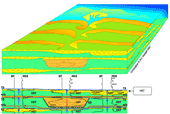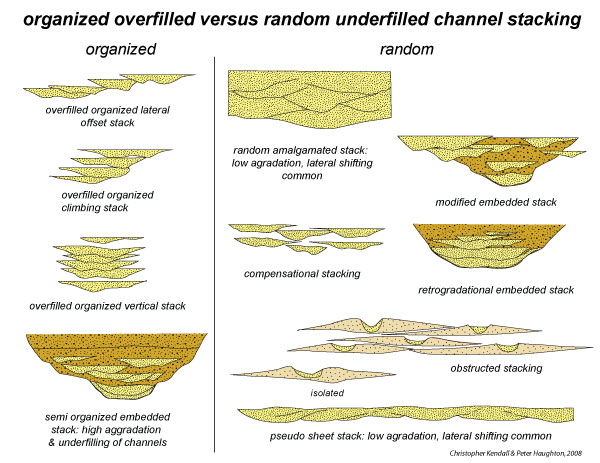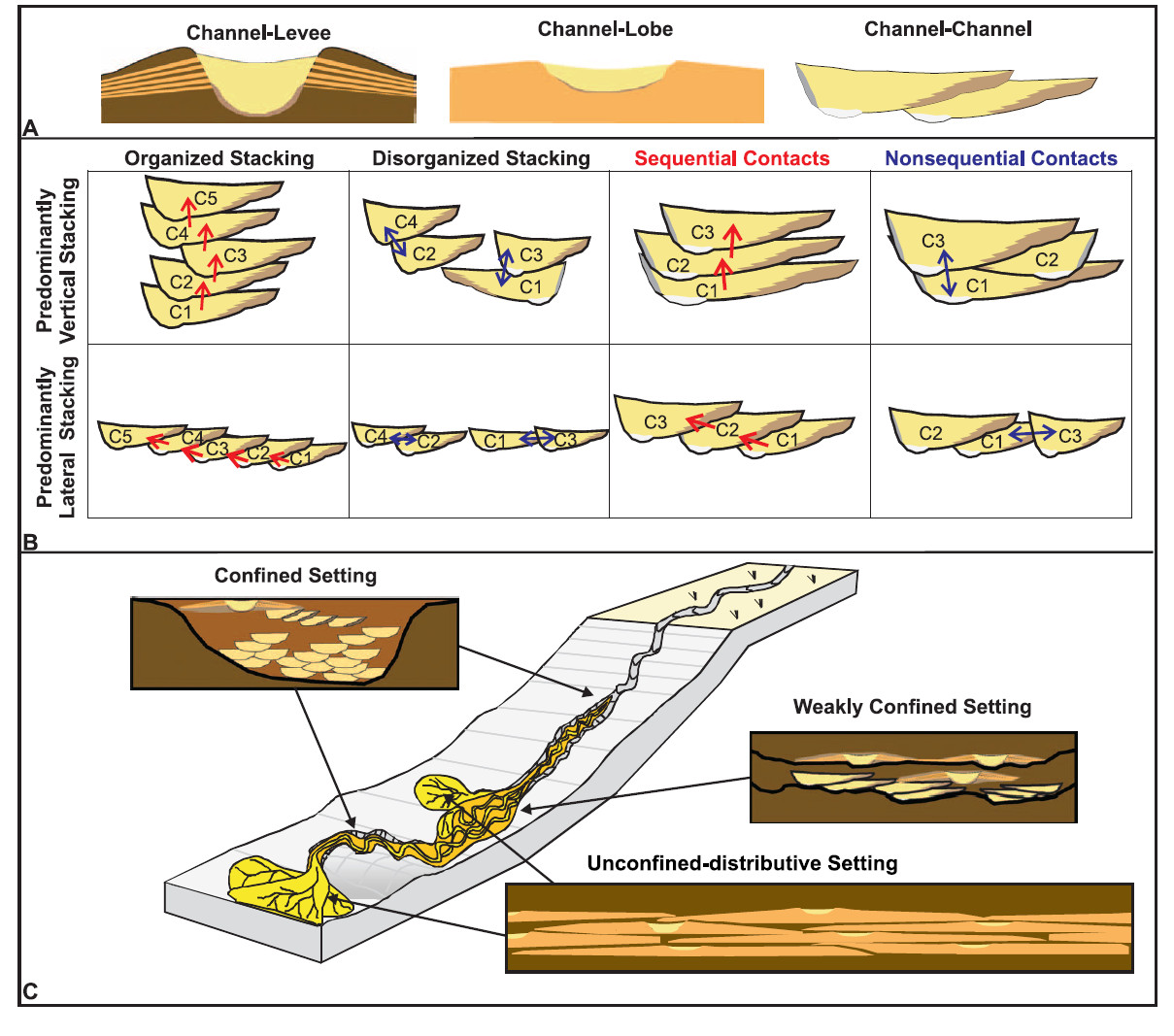|
falling stage systems tract
transgressive surface (TS)
 |
Channels formed by fluvial and submarine deepwater systems fill incised valleys that can be up to several hundred feet deep, ranging in width from a half mile to many tens of miles. The channels are confined within eroded topography and vary their lithological character and the organization of the stacking of their geometries in response to the rates of flow of the transporting media and the character of the source areas of the sediments carried to their current depositional setting.
Stacking character varies as illustrated in the figures below:-

Timing of the incision of the incised valley may often be within the falling stage systems tract, while the fill of the incision will tend to occur during the following lowstand systems tract to be capped by a Trangressive Surface.
Figure: Stratigraphic architecture of a fluvial depositional sequence influenced by base-level fluctuations for a incised valley (left) and a bypass channel system (right). Note difference between tidally influenced (estuarine) channels caused by flooding of incised valleys opposed to more lagoonal deposits when the flat shelf of the bypass system is flooded. Abbreviations: maximum flooding surface (MFS). Modified from Shanley and McCabe (1993)(after-W.J.-van-Strien 2010). 
Figure: Four categories of static connectivity: association of architectural elements, stacking pattern of channel elements, setting on the slope-to-basin profile, and net sand content.
(A) associations of architectural elements: channel-levee, channel-lobe, channel-channel.
(B) stacking patterns common to deep-water settings
(C) three settings on slope-to-basin profile defined as confined, weakly confined, and unconfined-distributive (Funk, Slatt, and Pyles 2012).
References
Coe, Angela, Dan Bosence, Kevin Church, Steve Flint, John Howell and Chris Wilson, (2002) "The Sedimentary Record of Sea Level Change" ,Cambridge University Press, 288 pp.
Jonathan E. Funk, Roger M. Slatt, and David R. Pyles, (2012), "Quantification of static connectivity between deep-water channels and stratigraphically adjacent architectural elements using outcrop analogs", AAPG Bulletin, v. 96, no. 2, pp. 277–300
van Strien, Willem, (2010), Fluvial sequence stratigraphy .http://www.epgeology.com/sedimentology-f19/fluvial-sequence-stratigraphy-t429.html
|